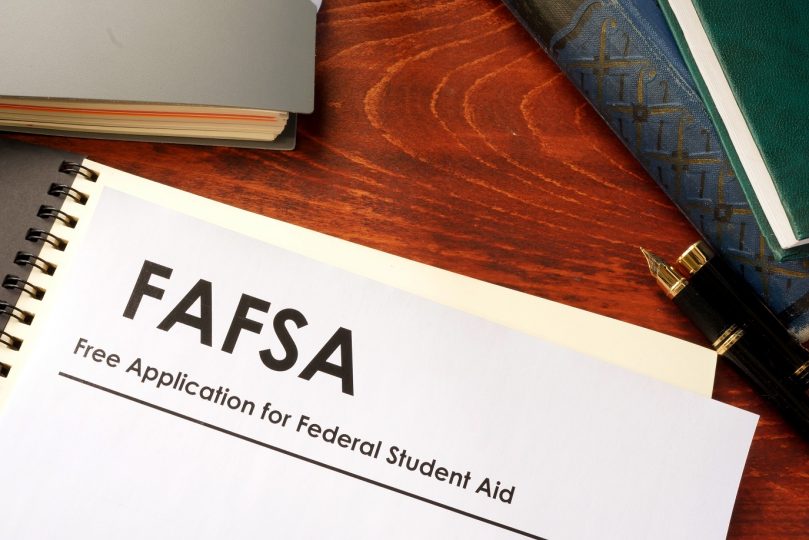Financial Planning For College: How To Get The Most Out Of The FAFSA

If you’re the parent of a college-bound high school student, you’ve probably already started receiving junk mail with pictures of big, impressive stone facades on the outside and big, appalling price tags on the inside. It’s college recruitment season, and college costs are at an all-time high. If your young scholar has his or her sights set on a private school, you can expect to shell out about $120,000 on tuition.
Whether or not you plan to help your children pay these costs, the federal government will use your financial status to assess your child’s financial need in terms of an Expected Family Contribution (EFC). Whether you expect to qualify or not, you’ll have to fill out a Free Application for Federal Student Aid – the FAFSA form. This form will be used in determining your child’s eligibility for a variety of scholarships, including subsidized student loans, Pell grants and other need-based financial aid.
The equation the government uses to calculate the EFC based on the FAFSA is publicly available. With this knowledge, you can move assets around to make your financial situation look as unimpressive to the government as possible. By doing so, you can help your child get qualified for more financial aid for college. You can help pay for school without spending any money by taking these steps:
Reduce your cash assets. The FAFSA formula expects that you’ll use a portion of your liquid assets – that is, money in savings accounts, money market accounts, brokerage accounts, CDs and checking accounts – to pay for college. If you’ve got significant savings there, consider using it to pay down your mortgage or save it in a retirement fund. Neither of these accounts are considered “cash” as far as the FAFSA is concerned.
Move investments into real property. The assets of your business are protected by the FAFSA equation. If you’ve been considering a capital upgrade, like new equipment or a bigger office, now might be the time to do so. If you don’t own a small business, consider shifting your savings into rental property or making improvements to your home. Both of these will reduce your cash assets.
Make purchasing decisions with asset reduction in mind. If you are thinking about taking a big vacation before you send your little ones back to school, consider paying for it with a withdrawal from your savings rather than financing it through debt. The debt will accumulate interest, while the reduction in assets will make your EFC smaller.
Review retirement account contributions. If you haven’t already done so, maximize your tax-deductible contributions to retirement accounts. This will lower your income without counting as assets for the FAFSA. You can do the same thing if you’re planning a large, one-time charitable gift or other tax-deductible expense.
Don’t lie on the FAFSA. It seems obvious but bears stating. Lying on the FAFSA is a federal crime that could put you in serious trouble. Any money you gained with a fraudulent FAFSA would have to be paid back, usually with penalties.
Reduce savings in your child’s name first. Because children have fewer expenses, they’re expected to pay a higher percentage of their assets. You can put the money back into savings on his or her behalf after graduation.
Discuss college planning with gift-giving relatives. If grandparents are thinking of making a significant gift, ask them to hold off until after graduation. Once the FAFSA has been submitted, it’s good for a whole year.
Be wary of firms that promise to reduce your EFC by huge margins. Often, these savings offers are pitched to desperate parents as a way to sell low-return annuities. These annuities can come with their own serious financial repercussions.
Buy needed supplies before you fill out the FAFSA. Your student will need thousands of dollars worth of supplies, from computers to dorm furnishings. You can usually get a better price if you buy early. Also, you can deduct that money from college savings.
Time your return to school. If you or your spouse is considering returning to school to pursue a higher degree, consider enrolling concurrently. Having two members of the family in college simultaneously allows you to divide your EFC by two.
If your child is employed by the family business, it may be time to let them go. Student income is one of the biggest expected sources of contribution, and students who earn significant income will not qualify for financial aid.
These tricks can only affect your EFC so much. Don’t expect miracles. Unless you’re right at one of the significant FAFSA thresholds, you will likely only end up with some deferred interest loans. For help paying the rest of college expenses, get help from a community lending organization like Sharon Credit Union.
Our representatives can help you set up college savings plans, like 529 accounts, for younger children, and may be able to offer competitive rates on student loans for children who are ready to leave for school. Call, email or stop by Sharon Credit Union today, to get help financing your educational future.
« Return to "Blog Home"
- Share on Facebook: Financial Planning For College: How To Get The Most Out Of The FAFSA
- Share on Twitter: Financial Planning For College: How To Get The Most Out Of The FAFSA
- Share on LinkedIn: Financial Planning For College: How To Get The Most Out Of The FAFSA
- Share on Pinterest: Financial Planning For College: How To Get The Most Out Of The FAFSA

